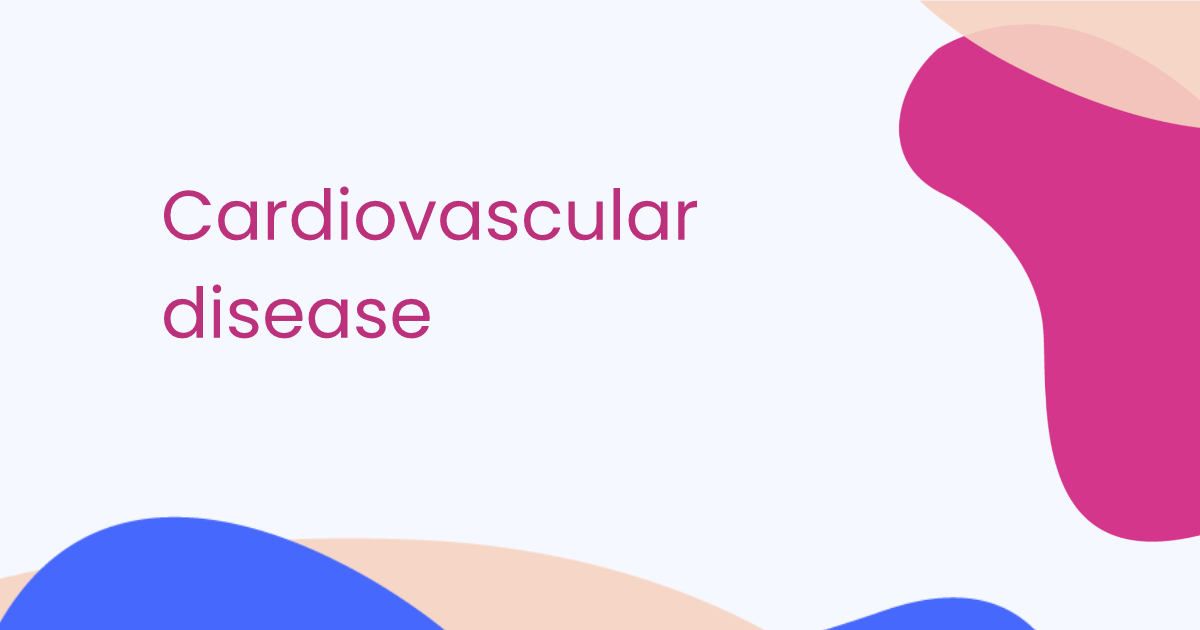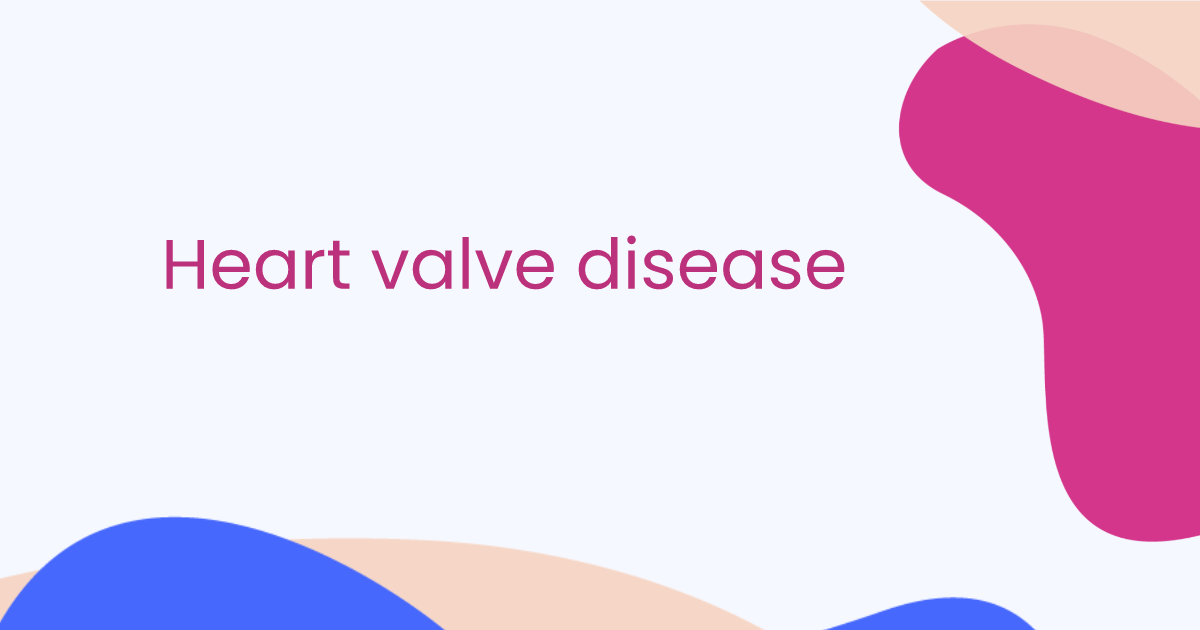Mikrovaskuläre Angina
Kardiales Syndrom X
Begutachtet von Dr. Colin Tidy, MRCGPZuletzt aktualisiert von Dr. Hayley Willacy, FRCGP Zuletzt aktualisiert am 20 Nov 2023
Erfüllt die Anforderungen des Patienten redaktionelle Richtlinien
- HerunterladenHerunterladen
- Teilen Sie
- Sprache
- Diskussion
In dieser Serie:Angina pectorisSpasmen der Koronararterien
Es gibt keine einheitliche Definition für CSX. Die zugrundeliegende Ursache kann eine plötzliche Verengung (Spasmus) normaler Koronararterien ohne Anzeichen von atheromatösen Fettablagerungen sein.
In diesem Artikel:
Lesen Sie unten weiter
Was ist das kardiale Syndrom X?
Das kardiale Syndrom X (CSX) ist vermutlich eine Form der Angina pectoris. Bei CSX treten Schmerzen in der Brust auf, wenn das Herz härter arbeitet, die Herzarterien bei der Koronarangiographie jedoch normal zu sein scheinen.
Der Begriff CSX wird häufig zur Beschreibung einer mikrovaskulären Angina verwendet. Die größeren Blutgefäße des Herzens (die sich bei Untersuchungen zeigen) sind normal. Es wird jedoch angenommen, dass die viel kleineren Gefäße (die Mikrogefäße) verengt sind. Daher wäre eine bessere Bezeichnung für CSX vielleicht "mikrovaskuläre Angina".
Wie häufig ist das kardiale Syndrom X?
Da die Ärzte noch nicht genau wissen, was CSX ist, gibt es keine genauen Zahlen darüber, wie viele Menschen an dieser Krankheit leiden. Jedes Jahr erkranken im Vereinigten Königreich etwa 20.000 Menschen zum ersten Mal an Angina pectoris. Von diesen Menschen hat etwa 1 von 5 Frauen und 1 von 10 Männern CSX. Im Gegensatz zur häufigeren Angina pectoris tritt CSX bei Frauen häufiger auf als bei Männern. Bestimmte Faktoren begünstigen die Entwicklung einer CSX - zum Beispiel:
Mit leichter Arthritis.
Lesen Sie unten weiter
Was sind die Symptome einer mikrovaskulären Angina?
Das häufigste Symptom ist ein Schmerz, ein Unbehagen oder ein Engegefühl, das bei Anstrengung im vorderen Bereich der Brust zu spüren ist - etwa beim Bergaufgehen oder bei starkem, kaltem Wind. Der Schmerz kann auch in den Armen, im Kiefer, im Nacken oder im Bauch spürbar sein.
Ein Angina-Schmerz hält in der Regel nicht lange an. Er lässt in der Regel innerhalb von 10 Minuten nach, wenn man sich ausruht. Angina-Pectoris-Schmerzen können auch durch andere Ursachen für eine schnellere Herzfrequenz ausgelöst werden. Zum Beispiel durch einen lebhaften Traum oder einen Streit. Die Schmerzen treten auch leichter nach den Mahlzeiten auf.
CSX-Schmerzen können sehr stark sein und zu Behinderungen führen.
Wie wird eine mikrovaskuläre Angina diagnostiziert?
Der Arzt wird alles über die Schmerzen wissen wollen und wann sie auftreten. Schmerzen vom Typ Angina haben ein Muster. Er wird diese Informationen auch nutzen, um andere Schmerzursachen auszuschließen, z. B. Schmerzen in der Speiseröhre oder in den Muskeln und Gelenken.
Ein Arzt kann auch:
Fragen Sie nach den Lebensgewohnheiten (Rauchen und Trinken).
Fragen Sie nach typischen Ernährungs- und Bewegungsmustern.
Messen Sie den Blutdruck.
Sie können eine Blutuntersuchung zur Überprüfung des Cholesterinspiegels empfehlen.
Lesen Sie unten weiter
Tests für mikrovaskuläre Angina
Test zur Herzverfolgung
Häufig wird eine Herzuntersuchung(Elektrokardiogramm oder EKG) durchgeführt. Dies ist jedoch normalerweise normal, wenn Sie sich nicht anstrengen. Ein EKG unter Belastung (manchmal auch als Stresstest bezeichnet) kann dem Arzt ein typisches Muster (ein nach unten abfallendes ST-Segment) aufzeigen. Dies hilft bei der Diagnosestellung.
Angiogramm-Test
Eine typische Angina pectoris kann durch ein Angiogramm bestätigt werden. Dabei wird ein spezieller Farbstoff in die Arterien oder das Herz (Herzkranzgefäße) injiziert. Ein Röntgengerät zeigt die Struktur der Arterien und kann auch die Lage und den Schweregrad einer durch Atherome verursachten Verengung aufzeigen.
Das Angiogramm ist bei Menschen mit CSX normalerweise normal. Allerdings kann das Angiogramm eine Verengung zeigen, wenn bestimmte Chemikalien (z. B. Acetylcholin) injiziert werden. Die Injektion dieser Chemikalien, die Anomalien im Angiogramm verursachen, hilft bei der Diagnose von CSX.
Koronare Flussreserve
In den Leitlinien wird nun empfohlen, den Blutfluss in den Koronararterien zu messen, während ein Krampf ausgelöst wird. Dies wird als koronare Flussreserve bezeichnet. Sie ist ein nützlicher Anhaltspunkt dafür, welche Behandlungen eingesetzt werden sollten und wie hoch das Risiko ist, dass der Spasmus zu anderen Ereignissen wie einem Herzinfarkt führt. Die Messungen können entweder invasiv (durch einen in eine Hauptvene eingeführten Führungsdraht) oder nichtinvasiv mit Hilfe eines bildgebenden Verfahrens ( Echokardiographie, MRT oder PET-Scan) durchgeführt werden .
Wie behandelt man mikrovaskuläre Angina?
CSX kann schwierig zu behandeln sein, aber eine Reihe von verschiedenen Behandlungen kann helfen. Zu den Behandlungen gehört die Reduzierung der oben genannten Risikofaktoren. Besonders wichtig ist es, sich regelmäßig zu bewegen.
Verschiedene Medikamente können ebenfalls hilfreich sein, darunter Kalziumkanalblocker, Betablocker, ACE-Hemmer (Angiotensin-Converting-Enzyme), Ranolazin und Statine. Nitrate wie GTN können zur Linderung der Symptome zusätzlich zu den länger wirkenden Nitraten zur allgemeinen Kontrolle wirksam sein. Ein Thrombozytenaggregationshemmer (z. B. Aspirin) kann ebenfalls eingesetzt werden, um das Risiko der Bildung von Blutgerinnseln zu verringern, die zu einem Herzinfarkt führen könnten.
Glycerintrinitrat (GTN) Spray oder Tabletten
Wenn eine Angina pectoris wahrscheinlich ist, wird in der Regel Glyceryltrinitrat (GTN) als Spray oder Tablette verschrieben. Beim Auftreten der Angina pectoris wird eine Dosis unter die Zunge gespritzt. GTN wird unter der Zunge schnell in den Blutkreislauf aufgenommen und sollte die Schmerzen innerhalb weniger Minuten lindern.
Es wirkt, indem es die Blutgefäße entspannt. Dadurch wird die Arbeitsbelastung des Herzens verringert. Es hilft auch, die Koronararterien zu erweitern und den Blutfluss zum Herzmuskel zu erhöhen.
Eine Dosis GTN kann für kurze Zeit Kopfschmerzen und/oder eine Gesichtsröte verursachen. Wenn dieses Arzneimittel die Schmerzen nicht schnell lindert, informieren Sie Ihren Arzt. Weitere Tests können erforderlich sein.
Andere Behandlungen für mikrovaskuläre Angina
Andere Behandlungen, die ausprobiert wurden, umfassen ein Gerät zur transkutanen elektrischen Nervenstimulation (TENS) oder einen Rückenmarkstimulator. Sie helfen, die Schmerzen zu lindern und die Belastbarkeit zu erhöhen.
Bei Bluthochdruck oder einem hohen Cholesterinspiegel können manchmal auch andere Arzneimittel empfohlen werden. Diese sollen Ihr Gesamtrisiko für kardiovaskuläre Probleme senken.
Was kann ich tun, um mir selbst zu helfen?
Bestimmte Faktoren erhöhen das Risiko, dass sich mehr Fettflecken oder Plaques (Atherome) bilden, die jede Art von Angina verschlimmern können. Diese Faktoren werden in einer separaten Broschüre mit dem Titel "Vorbeugung von Herz-Kreislauf-Erkrankungen" ausführlicher behandelt.
Ist mikrovaskuläre Angina ernst zu nehmen?
Die CSX-Symptome können sich mit der Zeit verbessern. Leider verschlimmern sich die Symptome bei etwa 1 von 5 Personen. Die Schmerzen können schwer zu lindern sein, und das beeinträchtigt die Lebensqualität von Menschen mit CSX.
Patienten wählen aus für Herzkrankheiten

Herzgesundheit und Blutgefäße
Kardiovaskuläre Erkrankungen
Herz-Kreislauf-Erkrankungen (CVD) ist ein allgemeiner Begriff für Erkrankungen des Herzens oder der Blutgefäße. Die Ursache der meisten Herz-Kreislauf-Erkrankungen ist eine Ablagerung von Atheromen - Fettablagerungen in der Innenauskleidung der Arterien. Der Blutfluss zum Herzmuskel kann auch durch ein Blutgerinnsel in einer Arterie, die das Blut zum Herzmuskel führt, behindert sein (koronare Herzkrankheit). Atherome oder Blutgerinnsel können auch die Blutzufuhr zum Gehirn (zerebrovaskuläre Erkrankung) oder zu den Beinen und Füßen (periphere arterielle Verschlusskrankheit) einschränken oder verhindern. Es gibt Lebensstilfaktoren, die das Risiko der Atherombildung verringern können. Dazu gehören der Verzicht auf das Rauchen, die Auswahl gesunder Lebensmittel, ein geringer Salzkonsum, regelmäßige körperliche Betätigung, die Beibehaltung von Gewicht und Taillenumfang sowie ein maßvoller Alkoholkonsum. Auch Ihr Blutdruck und Ihr Cholesterinspiegel sind wichtig. Alle Menschen über 40 Jahre sollten sich einer Risikobewertung ihrer kardiovaskulären Gesundheit unterziehen, die in der Regel in der Praxis ihres Hausarztes erhältlich ist. Wenn Sie ein hohes Risiko für die Entwicklung einer Herz-Kreislauf-Erkrankung haben, kann eine Behandlung zur Senkung des Bluthochdrucks (Hypertonie) und/oder des Cholesterinspiegels angeraten werden.
von Dr. Colin Tidy, MRCGP

Herzgesundheit und Blutgefäße
Herzklappenerkrankung
Herzklappen sitzen zwischen den Herzkammern und steuern den Blutfluss durch das Herz. Es gibt vier häufige Arten von Herzklappenproblemen - Mitralstenose, Mitralinsuffizienz, Aortenstenose und Aorteninsuffizienz. Die Broschüre "Anatomie des Herzens" enthält Einzelheiten über die Funktion des Herzens und die Art und Weise, wie das Herz schlägt.
von Dr. Philippa Vincent, MRCGP
Weiterführende Literatur und Referenzen
- Mahtani AU, Padda IS, Johal GSKardiales Syndrom X.
- Knuuti J, Wijns W, Saraste A, et al2019 ESC Guidelines for the diagnosis and management of chronic coronary syndromes. Eur Heart J. 2020 Jan 14;41(3):407-477. doi: 10.1093/eurheartj/ehz425.
- Jarczewski J, Jarczewska A, Boryczko A, et alMikrovaskuläre Angina (kardiales Syndrom X) - ein historischer Überblick, Epidemiologie, Pathophysiologie und Behandlungsempfehlungen - ein Minivorschlag. Folia Med Cracov. 2021 Sep 29;61(3):95-114. doi: 10.24425/fmc.2021.138954.
- Elsayed EANicht-invasive Bewertung der koronaren Flussreserve bei Patienten mit kardialem Syndrom X. Eur Cardiol. 2023 Apr 25;18:e24. doi: 10.15420/ecr.2023.18.PO7. eCollection 2023.
Lesen Sie unten weiter
Artikel Geschichte
Die Informationen auf dieser Seite wurden von qualifizierten Klinikern verfasst und von Fachleuten geprüft.
Nächste Überprüfung fällig: 18. November 2028
20 Nov 2023 | Neueste Version

Fragen, teilen, verbinden.
Stöbern Sie in Diskussionen, stellen Sie Fragen, und tauschen Sie Erfahrungen zu Hunderten von Gesundheitsthemen aus.

Fühlen Sie sich unwohl?
Beurteilen Sie Ihre Symptome online und kostenlos
Sign up to the Patient newsletter
Your weekly dose of clear, trustworthy health advice - written to help you feel informed, confident and in control.
By subscribing you accept our Privacy Policy. You can unsubscribe at any time. We never sell your data.